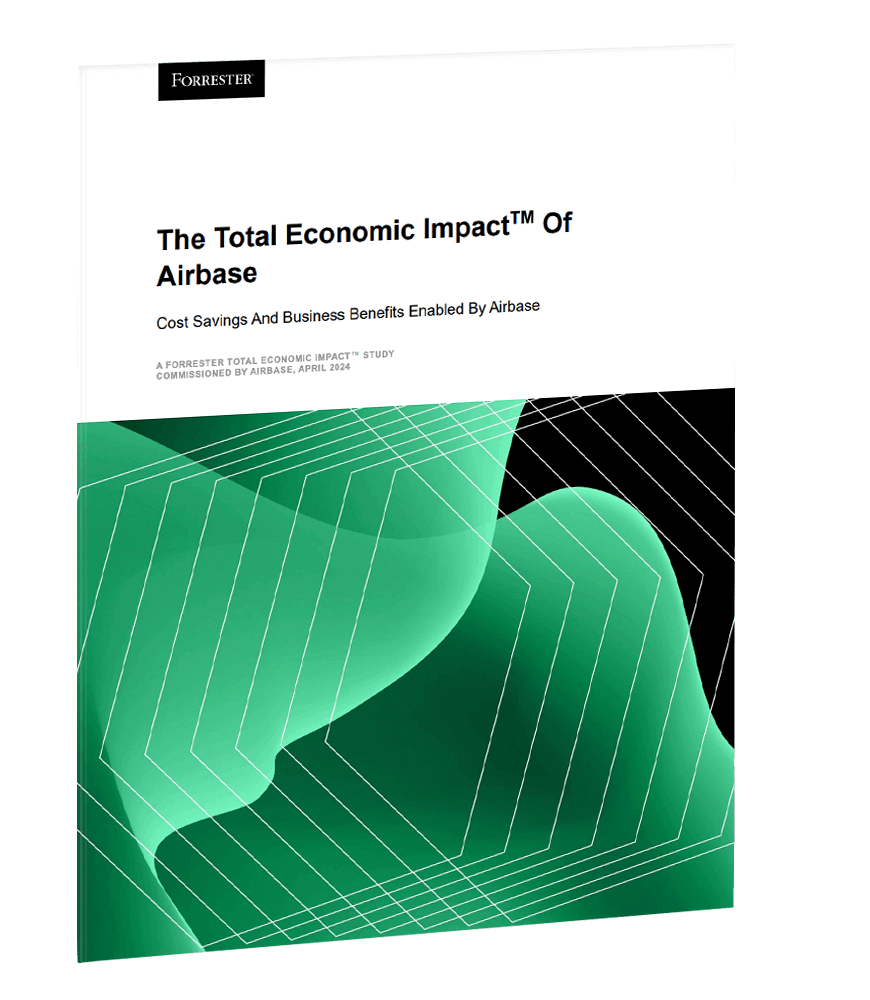When 40% of finance professionals report spending $250K-1M on corporate travel, an Excel spreadsheet doesn’t cut it anymore.
Whether you’re a startup or an established enterprise, submitting, processing, approving, and reimbursing expenses quickly becomes complex. Expense management software simplifies this challenge and saves you time, money, and hassle.
It’s no wonder more businesses have adopted these tools, especially with features like “touchless expense reporting,” where software automates the bulk of the work. No more manually tracking paper receipts, filing reports after a long trip, and endlessly re-explaining the expense policies. Instead, seamlessly manage it all through a single platform.
Let’s dive into why every business needs expense management software to transform financial operations.

What are the benefits of expense management software?
Expense management software is an essential solution that streamlines the expense management process and provides more clarity for finance teams. In turn, you get benefits like:
1. Improved financial accuracy.
Expense management software automates calculations and expense categorization for improved accuracy and fewer human errors. Optical character recognition (OCR) technology accurately and automatically captures receipt information, eliminating manual data entry while enhancing accuracy in expense reporting.
As a result, you get improved financial reporting and forecasting to make informed decisions based on real-time data.
2. Enhanced visibility.
With everything in one place, you gain greater insight into where your money is going. Expense management software provides a clear, centralized view of all transactions — spot trends, identify waste, and optimize spending. It also keeps employees up to date with real-time spend tracking and expense report processing notifications.
3. Audit and compliance readiness.
Maintaining compliance is easier with an automated expense tracking system. Expense software often includes built-in audit trails to produce documentation for auditors on demand. No more scrambling to find receipts and cross-check transactions.
Managing employee expenses also becomes more efficient and compliant with features like policy enforcement, timely reimbursements, and integrations with accounting systems.
4. Reduction in business expenses.
When you manage spend more efficiently, you reduce unnecessary costs. Expense management software helps you create and enforce spending policies, which leads to less waste and better use of resources. It also highlights high-spend areas to cut back and realize additional cost savings.
Need more clarity on which type of expense software is right for your business? Check out our article on expense management vs. spend management.
How to choose expense management software.
With so many different tools out there, how do you choose the right expense report software for your business? Here are the key criteria to keep in mind as you evaluate your options.
- Support and training: Make sure the provider offers strong customer support and comprehensive training for your team for a smooth transition and effective ongoing use.
- Integration capabilities: Your expense management program should integrate seamlessly with the other tools your business relies on. Whether it’s accounting software, an enterprise resource planning (ERP) system, or travel-booking platforms like TravelPerk, effortless integration creates a unified workflow.
- Scalability: As your business grows, so will your expense management needs. Choose a platform that scales with you and meets both your current and future requirements.
- User-friendly interface: If the software is difficult to use, your employees won’t use it correctly — or worse, they won’t use it at all. Prioritize platforms that are intuitive and easy to navigate to ensure high adoption rates across your company.
- Fit for your business use case: Finally, make sure the software includes the right tools and resources to help solve your expense management challenges. For example, if your company frequently deals with international expenses, look for a platform that supports multi-currency transactions.
Once you’ve chosen the perfect platform, follow these expense management tips to make the most of your investment.
If the software is difficult to use, your employees won’t use it correctly — or worse, they won’t use it at all. Prioritize platforms that are intuitive and easy to navigate to ensure high adoption rates across your company.

Expense Management Tour
The best expense management software providers.
Now that you know what to look for, let’s explore some of the top expense management software providers on the market, along with reviews from actual users.
Airbase.
Airbase is an all-in-one spend management platform that offers everything from bill payments to employee reimbursements. What sets Airbase apart is its “touchless expense reporting” feature, which automatically categorizes and manages expenses — no manual input required.
With Airbase’s expense management mobile app, users take photos of their receipts and submit expense reports in seconds. The platform’s OCR technology extracts all the details, and the built-in AI and ML tools verify and categorize the expense.
Airbase integrates seamlessly with the tools you use every day, and it even has a built-in integration with the booking platform TravelPerk to simplify expense reporting even further. However, the platform is primarily geared toward small and midsize enterprises (SMEs), so it may be more robust than what smaller businesses need.
What Airbase users have to say:
“Airbase makes getting paid super easy after a business trip. I have used Airbase on 15 work trips, and it is so easy to navigate. There are a number of features that make it simple to categorize payments and get paid out. I love it!” — Hunter B.
“Airbase is very easy to use as both an employee submitting expenses and a manager using the product. What I have enjoyed about Airbase are the different features available where I can easily submit reimbursement for expenses, or I can get a virtual card to pay for expenses as they come up. As an employee, I enjoy that I can see exactly what stage my reimbursement is in and who is the pending approver in case I need to follow up on anything. As a manager, it is extremely easy for me to go in and approve my employees’ reimbursements.” — Kathleen S.
Fyle.
Fyle is designed with simplicity in mind, so it’s an excellent choice for small to medium-sized businesses. The platform’s integrations with tools like Gmail, Outlook, and Slack make it easy to track expenses on the go, but its standout feature is its mileage tracking, powered by Google Maps.
Users set up automatic expense report submissions at regular intervals, and it’s simple to split expenses between categories, projects, employees, and more. However, since Fyle prioritizes user-friendliness and simplicity, its features may be too basic for larger businesses with more complex needs.
What Fyle users have to say:
“I like how user-friendly it is, and it allows me to code large quantities of receipts easily. I appreciate the text alerts when a charge comes in.” — Verified User
“It was hard to onboard. I was unaware that I had to connect my bank account to Fyle in order to receive a reimbursement. (Expensify, which I used at a previous company, just direct deposited the reimbursement with the monthly paycheck.) After clicking around a lot, I had to Google search how to connect my bank account to Fyle.” — Verified User
SAP Concur.
SAP is a heavyweight in the enterprise software market, with comprehensive, robust solutions for large businesses with complex needs. SAP Concur is the company’s expense management software, which you can use independently or in combination with other SAP modules.
The platform easily handles travel expenses and automates compliance processes. It also offers many integration capabilities with major ERP and accounting systems. However, since it’s designed for big enterprises, SAP Concur has a steep learning curve and higher cost, which may be prohibitive for smaller businesses.
What SAP Concur users have to say:
“For users with a corporate credit card, we are saved some time when inputting expenses, which is helpful. I also appreciate that we don’t have to look for a receipt, as it’s included when using our corporate card.” — Sonnet S.
“Booking travel with multiple stops can be frustrating. Often, flights available on the carriers website are not in Concur. Expense reporting is cumbersome and non-intuitive. It takes more effort than it should to complete a travel expense report. If you have a hotel bill with different daily rates for items, it can take a while to figure out and submit.” — John R.
Spendesk.
Spendesk is a spend management solution designed to give finance teams full control over company spending. It offers features like pre-paid virtual cards, invoice management, and automated expense reporting, all within a single platform.
The platform gives businesses granular control over employee spending for easy policy enforcement and real-time visibility into expenses. It’s also highly intuitive and user-friendly, so it’s easy for teams to adopt and use. But compared to some of the other options on this list, Spendesk comes with a bigger price tag and yet fewer features. Several users also report issues with virtual cards.
What Spendesk users have to say:
“Very user-friendly and easy to set up. Customer service is very reactive and has proven to be helpful in the past.” — Eve Van H.
“There seem to be regular issues with virtual cards and also there’s no way to bulk approve expenses which have been edited once you fix an error. For example, if several go through with an incorrect tax code then you have to approve and export them individually which seems quite backward.” — Verified User
Tipalti Expenses.
Tipalti is well-known for its automation capabilities, particularly for businesses with complex payables workflows. Its expense management module, Tipalti Expenses, is part of its larger ecosystem, which handles everything from vendor management to global payments. So it’s ideal for large organizations that need a comprehensive solution.
The platform’s automation tools and notifications make expense management a breeze, and it integrates seamlessly with most major ERP and accounting systems. However, since the platform is part of Tipalti’s full payables software, it may not be the best fit for smaller companies or startups that don’t need a complete solution. Some users also feel that the UI isn’t as sleek and intuitive as other options.
What Tipalti users have to say:
“It is an all-in-one tool. It does POs, vendors, expenses, and cards. Good integrations with mobile apps and finance tools.” — Ankit P.
“I really get frustrated when reviewing multiple invoices at one time. The UX is clunky and the cursor pops up with info windows constantly. I also get frustrated that the payee search box has to have the exact name typed as it is stored in the system — and doesn’t suggest near payees. For example, if I search John Doe, but it’s entered as JohnDoe, Tiplati returns no results. It just feels antiquated.” — Verified User
Zoho Expense.
Like Tipalti and SAP Concur, Zoho Expense is part of the broader Zoho suite, so it’s an excellent choice for businesses that already use other Zoho products. It offers comprehensive features, including multi-currency support, automated receipt scanning, and integrations with major accounting systems like Zoho Books, QuickBooks, and Xero.
Zoho Expense’s big selling point is its affordability, which makes it more accessible for SMBs. But, while it’s a great tool for those within the Zoho ecosystem, companies that use other systems might find the integration options somewhat limited compared to other platforms. Plus, some of the key features, like automated receipt scanning, require a monthly subscription fee.
What Zoho Expense users have to say:
“It was easy to get my account set up and start collecting expenses. Zoho’s phone app is excellent — well designed, and easy to use. I use the app often to ensure I am caught up on expenses, and it’s been 99% accurate in scanning all the data.” — TJ R.
“Less than a month after choosing Zoho Expense, the Business Model changed to requiring subscription for autoscans. The major problem is the subscription is now organisation based at $30 per month for 10 users. As a single user, there appears to be no option to just make a payment.” — Verified User
Streamline expense management with Airbase.
Expense management software is an essential tool for businesses of all sizes, but not every platform is the right fit for your company. As you review your options, look for a user-friendly solution that integrates seamlessly with your current tech stack and will meet your needs as your business grows.
Airbase’s comprehensive solution ticks all the boxes — it’s scalable, intuitive, and integrates with the tools you use every day. With features like automated expense reporting and reimbursement, built-in compliance, and clear audit trails, Airbase takes the manual headache out of expense management.
Ready to see the benefits of touchless expense reporting? Sign up for a free Airbase demo today!
FAQ.
Still have questions about expense management software? Check out these frequently asked questions and answers.
What is the best software for keeping track of expenses?
The best expense report software depends on your business needs and budget. Small businesses may appreciate a simple, pared-down, cost-effective option like Fyle, but mid-sized and larger businesses typically need a more comprehensive platform with advanced features, such as Airbase.
What is expense management software?
Expense management software helps businesses track, approve, and reimburse employee expenses for things like travel and per diem. Advanced solutions, such as Airbase, offer features like real-time insights and automated expense reporting to simplify the process end-to-end and help businesses better control employee spending.
How much does expense management software cost?
Pricing for expense management solutions varies by provider and features. Many providers offer tiered pricing or modular systems to fit a wide range of use cases and budgets.
 Jira Integration – Streamline Your Workflows
Jira Integration – Streamline Your Workflows  Ironclad Integration – Simplify Legal Operations
Ironclad Integration – Simplify Legal Operations  Asana
Asana 




